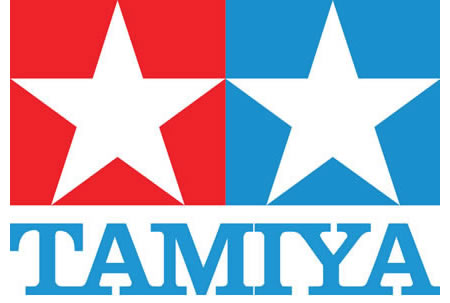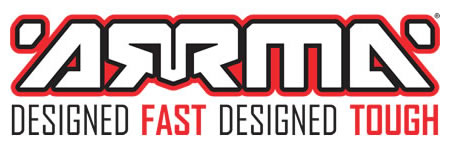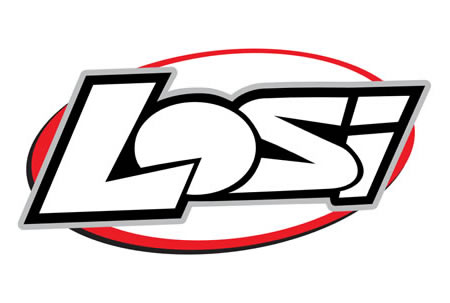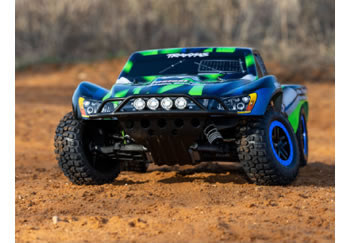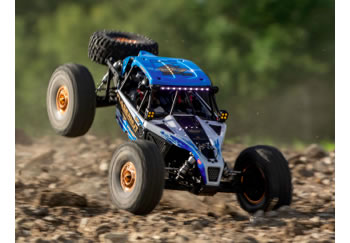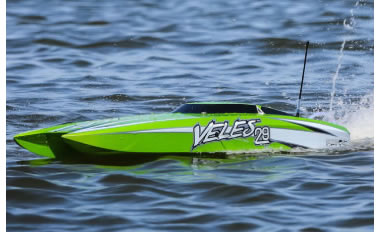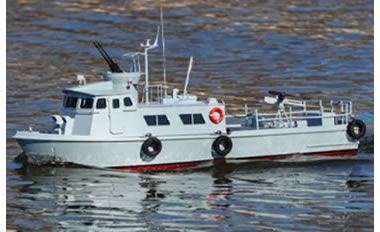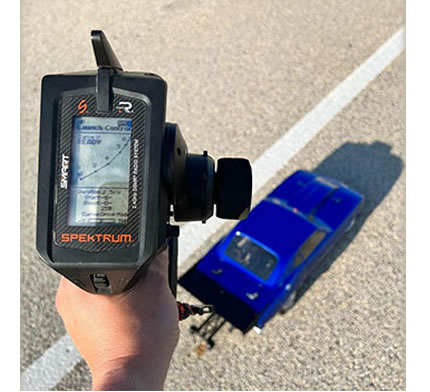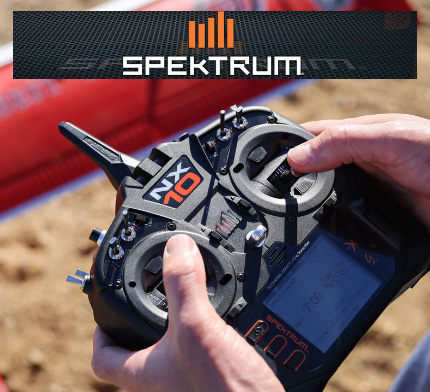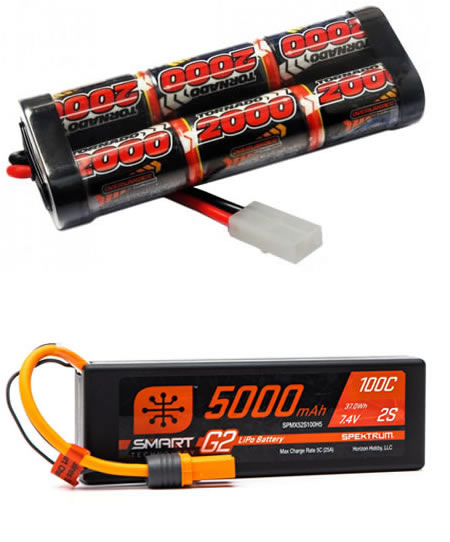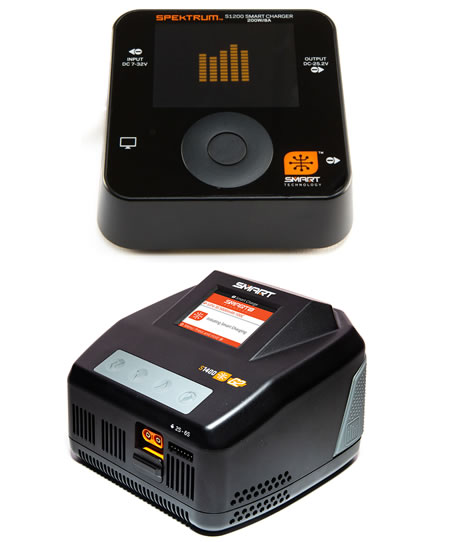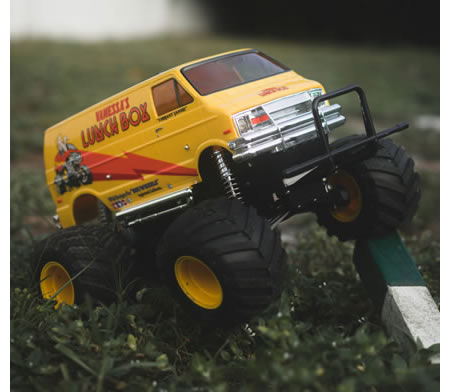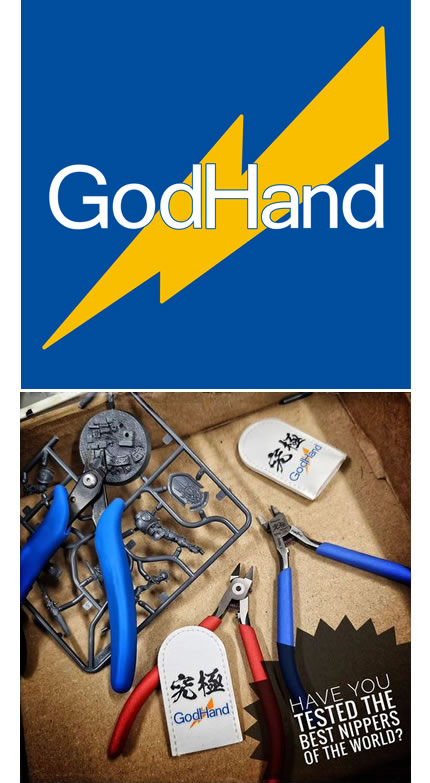Hobbyboss 1/48 Messerschmitt Bf109E-3 # 81791
 Spread the cost with Paypal Credit
0% for 24 months available on orders over £199
Spread the cost with Paypal Credit
0% for 24 months available on orders over £199
 Spread the cost with Klarna
0% for 24 months available on orders over £199
Spread the cost with Klarna
0% for 24 months available on orders over £199
![]()
The Messerschmitt Bf 109E-3, also known as the Bf 109 Emil, was one of the most important and iconic German fighter aircraft during the early years of World War II.
Developed by Willy Messerschmitt in the 1930s, the Bf 109 was a single-engine, single-seat fighter that served as the backbone of the Luftwaffe's fighter force throughout the war.
The E-3 variant was an improved version of the earlier Bf 109E models, and it saw extensive combat during pivotal campaigns such as the Battle of France and the Battle of Britain.
Key Features:
Airframe and Design:
The Bf 109E-3 had a sleek and aerodynamic design with a monocoque all-metal construction, giving it both strength and lightness.
It featured a low-wing, cantilever monoplane layout with retractable landing gear, which was advanced for its time.
The aircraft had a length of 8.7 meters and a wingspan of 9.9 meters, making it compact and highly maneuverable in dogfights.
Its lightweight structure and advanced aerodynamics allowed for exceptional performance in both speed and climb rate.
The cockpit canopy was enclosed, providing better visibility for the pilot, and was armored for added protection.
Engine and Performance:
The Bf 109E-3 was powered by a Daimler-Benz DB 601A liquid-cooled, inverted V-12 engine, producing around 1,100 horsepower.
This engine was a significant upgrade over the earlier Jumo engines used in the initial Bf 109 models.
The aircraft had a top speed of 570 km/h (355 mph) at an altitude of around 12,000 feet, and it could climb to 4,000 meters (13,120 feet) in just 4.3 minutes, giving it a tactical edge in combat.
It had an operational range of approximately 660 km (410 miles), which could be extended with external fuel tanks, making it suitable for both short-range interception and longer patrols.
Armament:
The Bf 109E-3 was heavily armed for its time.
It featured two 7.92mm MG 17 machine guns mounted in the upper cowling, synchronized to fire through the propeller arc, and an additional two MG FF 20mm cannons located in the wings.
The combination of machine guns and cannons gave the aircraft a formidable punch in air-to-air combat, with the 20mm cannons providing excellent firepower against both aircraft and ground targets.
The machine guns provided high rates of fire, while the cannons delivered heavier, more destructive rounds.
This blend of firepower made the Bf 109E-3 highly effective in aerial combat, especially against bombers.
Armored Protection:
The E-3 variant introduced better armor protection for the pilot, particularly in the form of an armored windscreen and seat-back plate, enhancing pilot survivability in combat.
Operational Role:
Air Superiority and Dogfighting: The Bf 109E-3 was designed primarily as a fighter and interceptor, excelling in dogfights against Allied aircraft such as the Hawker Hurricane and Supermarine Spitfire. Its speed, maneuverability, and climb rate made it a formidable opponent in the hands of experienced pilots.
Escort and Interception: During the Battle of Britain, the Bf 109E-3 was used as an escort fighter for German bombers, tasked with protecting them from British fighters. Its limited fuel capacity, however, meant it had a restricted operational range over Britain, often forcing it to turn back before it could effectively protect the bombers throughout their entire mission.
Combat Performance:
The Bf 109E-3 saw significant action during the early years of World War II, including the Invasion of Poland (1939), the Battle of France (1940), and the Battle of Britain (1940).During the Battle of France, the Bf 109E-3 proved superior to most Allied fighters in terms of speed and firepower, contributing to the rapid German advance.
In the Battle of Britain, the Bf 109E-3 came up against the RAF's Spitfires and Hurricanes.
While the aircraft were evenly matched in terms of performance, the Bf 109E-3 was hampered by its shorter range and the need to operate from bases in France, which limited its time over enemy territory.
Legacy and Impact:
The Bf 109E-3 was a key component of the Luftwaffe’s early air dominance.
It introduced high-speed fighter tactics that would become standard in aerial warfare, emphasizing hit-and-run attacks and energy management in combat.
Its advanced design influenced future generations of fighter aircraft, and it remained a potent fighter throughout the war.
Although later variants of the Bf 109 improved upon the E-3’s performance and capabilities, the Bf 109E-3 is often remembered for its critical role in the early Blitzkrieg campaigns and for its part in the intense air battles over Britain.
It became one of the most recognizable symbols of German air power in the first half of World War II.
The Messerschmitt Bf 109E-3 remains one of the most iconic fighter aircraft of the Luftwaffe, representing a pivotal shift in fighter design and aerial combat tactics during the war.
Did you know we are the UK's largest GodHand Tools stockist and official UK distributor!
Check out their amazing Ultimate Nipper 5.0, which is the best Nipper on the market.
All Godhand tools are available for next-day delivery.
| SKU | HBB81791 |
|---|---|
| Manufacturer | Hobby Boss |
| Scale | 1/48 |
| EAN | 6939319217912 |
| Short Description | Hobbyboss 1/48 Messerschmitt Bf109E-3 # 81791 |
-
 Hobbyboss 1/48 A-10C Thunderbolt II # 81796Special Price £33.29 was £36.99 Save 10%
Hobbyboss 1/48 A-10C Thunderbolt II # 81796Special Price £33.29 was £36.99 Save 10% -
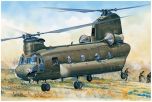 Hobbyboss 1/48 CH-47D Chinook # 81773Special Price £74.69 was £82.99 Save 10%
Hobbyboss 1/48 CH-47D Chinook # 81773Special Price £74.69 was £82.99 Save 10% -
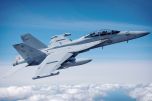 Hobbyboss 1/48 EA-18G Growler # 85814Special Price £60.29 was £66.99 Save 10%
Hobbyboss 1/48 EA-18G Growler # 85814Special Price £60.29 was £66.99 Save 10% -
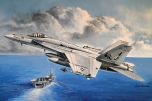 Hobbyboss 1/48 F/A-18E Super Hornet # 85812Special Price £58.49 was £64.99 Save 10%
Hobbyboss 1/48 F/A-18E Super Hornet # 85812Special Price £58.49 was £64.99 Save 10% -
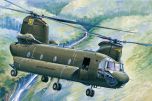 Hobbyboss 1/48 CH-47A Chinook # 81772Special Price £74.69 was £82.99 Save 10%
Hobbyboss 1/48 CH-47A Chinook # 81772Special Price £74.69 was £82.99 Save 10% -
 HobbyBoss 1/48 MV-22 Osprey # 81769Special Price £94.49 was £104.99 Save 10% Free UK Delivery
HobbyBoss 1/48 MV-22 Osprey # 81769Special Price £94.49 was £104.99 Save 10% Free UK Delivery -
 Hobbyboss 1/48 Russian MiG-35 # 81787Special Price £71.99 was £79.99 Save 10%
Hobbyboss 1/48 Russian MiG-35 # 81787Special Price £71.99 was £79.99 Save 10% -
 Hobbyboss 1/48 U-2S Dragon Lady Senior Span # 81785Special Price £47.69 was £52.99 Save 10%
Hobbyboss 1/48 U-2S Dragon Lady Senior Span # 81785Special Price £47.69 was £52.99 Save 10% -
 HobbyBoss 1/48 US B-24J Liberator # 81774Special Price £89.99 was £99.99 Save 10% Free UK Delivery
HobbyBoss 1/48 US B-24J Liberator # 81774Special Price £89.99 was £99.99 Save 10% Free UK Delivery -
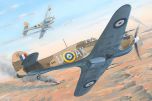 Hobbyboss 1/48 Hurricane Mk.II C / TROP # 81779Special Price £31.49 was £34.99 Save 10%
Hobbyboss 1/48 Hurricane Mk.II C / TROP # 81779Special Price £31.49 was £34.99 Save 10% -
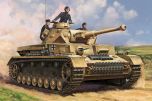 Hobbyboss 1/48 German Pzkpfw IV Ausf.F2 Medium Tank # 84840Special Price £22.49 was £24.99 Save 10%
Hobbyboss 1/48 German Pzkpfw IV Ausf.F2 Medium Tank # 84840Special Price £22.49 was £24.99 Save 10% -
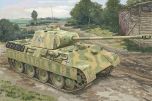 Hobbyboss 1/48 German Sd.Kfz 171 PzKpfw Ausf.A # 84830Special Price £26.09 was £28.99 Save 10%
Hobbyboss 1/48 German Sd.Kfz 171 PzKpfw Ausf.A # 84830Special Price £26.09 was £28.99 Save 10% -
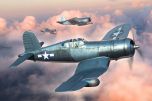 Hobbyboss 1/48 F4U-1A/2 Corsair (2 in 1) # 81788Special Price £40.49 was £44.99 Save 10%
Hobbyboss 1/48 F4U-1A/2 Corsair (2 in 1) # 81788Special Price £40.49 was £44.99 Save 10% -
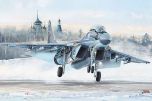 Hobbyboss 1/48 Russian MiG-29K # 81786Special Price £71.99 was £79.99 Save 10%
Hobbyboss 1/48 Russian MiG-29K # 81786Special Price £71.99 was £79.99 Save 10% -
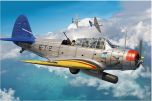 Hobbyboss 1/48 TBD-1 Devastator # 81783Special Price £42.29 was £46.99 Save 10%
Hobbyboss 1/48 TBD-1 Devastator # 81783Special Price £42.29 was £46.99 Save 10% -
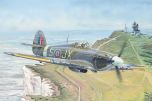 Hobbyboss 1/48 Hurricane Mk.II C # 81778Special Price £31.49 was £34.99 Save 10%
Hobbyboss 1/48 Hurricane Mk.II C # 81778Special Price £31.49 was £34.99 Save 10% -
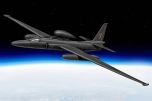 Hobbyboss 1/48 U-2R "Dragon Lady" Senior Span # 81740Special Price £49.49 was £54.99 Save 10%
Hobbyboss 1/48 U-2R "Dragon Lady" Senior Span # 81740Special Price £49.49 was £54.99 Save 10% -
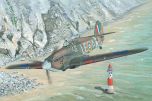 Hobbyboss 1/48 Hurricane Mk.I # 81777Special Price £31.49 was £34.99 Save 10%
Hobbyboss 1/48 Hurricane Mk.I # 81777Special Price £31.49 was £34.99 Save 10% -
 Hobbyboss 1/48 A-10C Thunderbolt II # 81796Special Price £33.29 was £36.99 Save 10%
Hobbyboss 1/48 A-10C Thunderbolt II # 81796Special Price £33.29 was £36.99 Save 10% -
 Hobbyboss 1/48 CH-47D Chinook # 81773Special Price £74.69 was £82.99 Save 10%
Hobbyboss 1/48 CH-47D Chinook # 81773Special Price £74.69 was £82.99 Save 10% -
 Hobbyboss 1/48 EA-18G Growler # 85814Special Price £60.29 was £66.99 Save 10%
Hobbyboss 1/48 EA-18G Growler # 85814Special Price £60.29 was £66.99 Save 10% -
 Hobbyboss 1/48 F/A-18E Super Hornet # 85812Special Price £58.49 was £64.99 Save 10%
Hobbyboss 1/48 F/A-18E Super Hornet # 85812Special Price £58.49 was £64.99 Save 10% -
 Hobbyboss 1/48 CH-47A Chinook # 81772Special Price £74.69 was £82.99 Save 10%
Hobbyboss 1/48 CH-47A Chinook # 81772Special Price £74.69 was £82.99 Save 10% -
 HobbyBoss 1/48 MV-22 Osprey # 81769Special Price £94.49 was £104.99 Save 10% Free UK Delivery
HobbyBoss 1/48 MV-22 Osprey # 81769Special Price £94.49 was £104.99 Save 10% Free UK Delivery -
 Hobbyboss 1/48 Russian MiG-35 # 81787Special Price £71.99 was £79.99 Save 10%
Hobbyboss 1/48 Russian MiG-35 # 81787Special Price £71.99 was £79.99 Save 10% -
 Hobbyboss 1/48 U-2S Dragon Lady Senior Span # 81785Special Price £47.69 was £52.99 Save 10%
Hobbyboss 1/48 U-2S Dragon Lady Senior Span # 81785Special Price £47.69 was £52.99 Save 10% -
 HobbyBoss 1/48 US B-24J Liberator # 81774Special Price £89.99 was £99.99 Save 10% Free UK Delivery
HobbyBoss 1/48 US B-24J Liberator # 81774Special Price £89.99 was £99.99 Save 10% Free UK Delivery -
 Hobbyboss 1/48 Hurricane Mk.II C / TROP # 81779Special Price £31.49 was £34.99 Save 10%
Hobbyboss 1/48 Hurricane Mk.II C / TROP # 81779Special Price £31.49 was £34.99 Save 10% -
 Hobbyboss 1/48 German Pzkpfw IV Ausf.F2 Medium Tank # 84840Special Price £22.49 was £24.99 Save 10%
Hobbyboss 1/48 German Pzkpfw IV Ausf.F2 Medium Tank # 84840Special Price £22.49 was £24.99 Save 10% -
 Hobbyboss 1/48 German Sd.Kfz 171 PzKpfw Ausf.A # 84830Special Price £26.09 was £28.99 Save 10%
Hobbyboss 1/48 German Sd.Kfz 171 PzKpfw Ausf.A # 84830Special Price £26.09 was £28.99 Save 10% -
 Hobbyboss 1/48 F4U-1A/2 Corsair (2 in 1) # 81788Special Price £40.49 was £44.99 Save 10%
Hobbyboss 1/48 F4U-1A/2 Corsair (2 in 1) # 81788Special Price £40.49 was £44.99 Save 10% -
 Hobbyboss 1/48 Russian MiG-29K # 81786Special Price £71.99 was £79.99 Save 10%
Hobbyboss 1/48 Russian MiG-29K # 81786Special Price £71.99 was £79.99 Save 10% -
 Hobbyboss 1/48 TBD-1 Devastator # 81783Special Price £42.29 was £46.99 Save 10%
Hobbyboss 1/48 TBD-1 Devastator # 81783Special Price £42.29 was £46.99 Save 10% -
 Hobbyboss 1/48 Hurricane Mk.II C # 81778Special Price £31.49 was £34.99 Save 10%
Hobbyboss 1/48 Hurricane Mk.II C # 81778Special Price £31.49 was £34.99 Save 10% -
 Hobbyboss 1/48 U-2R "Dragon Lady" Senior Span # 81740Special Price £49.49 was £54.99 Save 10%
Hobbyboss 1/48 U-2R "Dragon Lady" Senior Span # 81740Special Price £49.49 was £54.99 Save 10% -
 Hobbyboss 1/48 Hurricane Mk.I # 81777Special Price £31.49 was £34.99 Save 10%
Hobbyboss 1/48 Hurricane Mk.I # 81777Special Price £31.49 was £34.99 Save 10% -
 Hobbyboss 1/48 A-10C Thunderbolt II # 81796Special Price £33.29 was £36.99 Save 10%
Hobbyboss 1/48 A-10C Thunderbolt II # 81796Special Price £33.29 was £36.99 Save 10% -
 Hobbyboss 1/48 CH-47D Chinook # 81773Special Price £74.69 was £82.99 Save 10%
Hobbyboss 1/48 CH-47D Chinook # 81773Special Price £74.69 was £82.99 Save 10% -
 Hobbyboss 1/48 EA-18G Growler # 85814Special Price £60.29 was £66.99 Save 10%
Hobbyboss 1/48 EA-18G Growler # 85814Special Price £60.29 was £66.99 Save 10% -
 Hobbyboss 1/48 F/A-18E Super Hornet # 85812Special Price £58.49 was £64.99 Save 10%
Hobbyboss 1/48 F/A-18E Super Hornet # 85812Special Price £58.49 was £64.99 Save 10% -
 Hobbyboss 1/48 CH-47A Chinook # 81772Special Price £74.69 was £82.99 Save 10%
Hobbyboss 1/48 CH-47A Chinook # 81772Special Price £74.69 was £82.99 Save 10% -
 HobbyBoss 1/48 MV-22 Osprey # 81769Special Price £94.49 was £104.99 Save 10% Free UK Delivery
HobbyBoss 1/48 MV-22 Osprey # 81769Special Price £94.49 was £104.99 Save 10% Free UK Delivery

